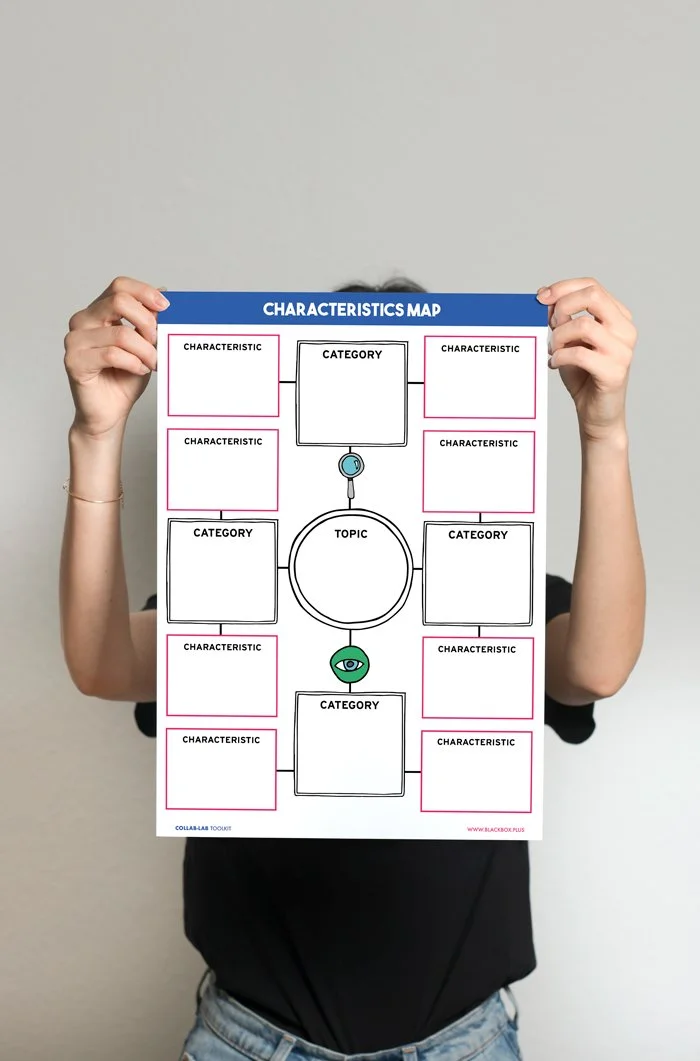- characteristics map -
- characteristics map -
The Characteristics Map routine is designed to help students critically and analytically explore a key concept, theme, or topic by identifying its major categories and associated characteristics. Through group collaboration, students break down the topic into manageable parts, providing examples and evidence where applicable.
This process encourages deeper thinking, enhances understanding, and results in a visual representation of the topic that can be shared or revisited for further learning.
INSTRUCTIONS
Prepare the Routine Framework
Print Out the Templates
Print out the Characteristics Map templates, available in six different colours. These colours are ideal for organising up to six groups, with each group assigned a specific colour. Whilst A3 paper works best for ample space to brainstorm and jot down ideas, A4 is a suitable alternative if A3 printing is unavailable.
Set Up the Workspace
Arrange desks or stations for each group, ensuring every group has access to a Characteristics Map template.
Deliver the Activity
Introduce the Routine
Explain the purpose of the Characteristics Map to the class. Highlight that they will collaboratively explore a topic by identifying its major categories (broad themes or organising ideas) and their key characteristics (specific details or examples).
Define the Topic
Clearly communicate the topic or concept for exploration. Write or project it on the board. For example, the topic might be "Ecosystems," and students will identify its categories and characteristics.
Divide Students Into Groups
Organise the class into up to six groups, ensuring a mix of abilities and perspectives in each group. Assign each group a coloured template.
Guide the Brainstorming Process
Topic: Instruct students to write the topic in the centre circle of the map.
Categories: Ask each group to brainstorm and write broad categories that relate to the topic, such as "Components of an Ecosystem" or "Types of Ecosystems."
Characteristics: Under each category, students should list specific characteristics or examples. For instance, under "Components of an Ecosystem," they might write "producers, consumers, decomposers." Encourage them to annotate with evidence or extra details where appropriate.
Facilitate Group Discussions
Walk around the room, offering guidance, asking probing questions, and encouraging students to justify their choices or provide additional examples.
Share and Compare
Once groups have completed their maps, have each group present their work to the class. Encourage other groups to ask questions or add new ideas to their peers’ maps.
Wrap-Up and Reflect
Display the Maps
Display the completed Characteristics Maps on the walls or in a shared space for future reference and ongoing discussion.
Reflect and Extend
Lead a class discussion on what students learned during the activity. Consider extending the activity by asking students to write a summary or create a presentation based on their map.
